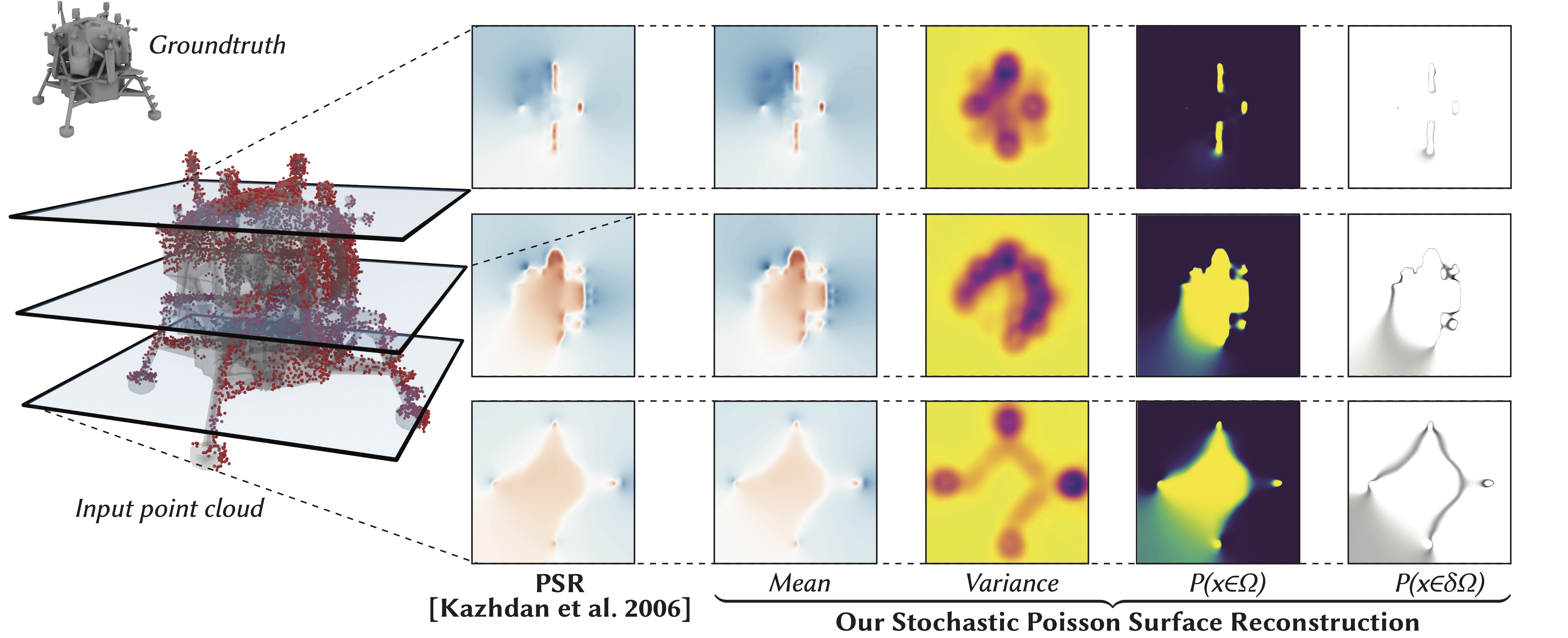

We introduce a statistical extension of the classic Poisson Surface Reconstruction algorithm for recovering shapes from 3D point clouds. Instead of outputting an implicit function, we represent the reconstructed shape as a modified Gaussian Process, which allows us to conduct statistical queries (e.g., the likelihood of a point in space being on the surface or inside a solid). We show that this perspective: improves PSR's integration into the online scanning process, broadens its application realm, and opens the door to other lines of research such as applying task-specific priors.
@article{Sellan:Stochastic:2022,
title = {Stochastic Poisson Surface Reconstruction},
author = {Silvia Sellán and Alec Jacobson},
year = {2022},
journal = {ACM Transactions on Graphics}
}
This project is funded in part by NSERC Discovery (RGPIN2017–05235, RGPAS–2017–507938), New Frontiers of Research Fund (NFRFE–201), the Ontario Early Research Award program, the Canada Research Chairs Program, a Sloan Research Fellowship, the DSI Catalyst Grant program and gifts by Adobe Inc. The first author is funded in part by an NSERC Vanier Scholarship and an Adobe Research Fellowship.
We acknowledge the authors of the 3D models used throughout this paper and thank them for making them available for academic use: ShaggyDude (Fig. 1, CC BY 4.0), Perry Engel (Fig. 17 third row, CC BY-NC 4.0), Joshua Poh (Fig. 18 left, CC BY-SA 3.0), Agustin Flowalistik (Fig. 18 right, CC BY-NC-SA 4.0), Will McKay (Fig. 20, CC BY-NC 4.0), Karl (Fig. 24, CC BY-SA 3.0) and Rafael Rodrigues (Figs. 25 and 26, CC BY-NC-SA 4.0).
We thank Kirill Serkh, Kiriakos Kutulakos, Eitan Grinspun, David I.W. Levin, Oded Stein, Nicholas Sharp, Otman Benchekroun and Towaki Takikawa for insightful conversations that inspired and guided us throughout our work; Abhishek Madan, Aravind Ramakr- ishnan and Jonathan Panuelos for proofreading; Hsueh-Ti Derek Liu for help rendering our results; Xuan Dam, John Hancock and all the University of Toronto Department of Computer Science re- search, administrative and maintenance staff that literally kept our lab running during very hard years.